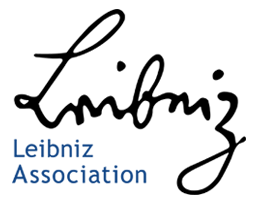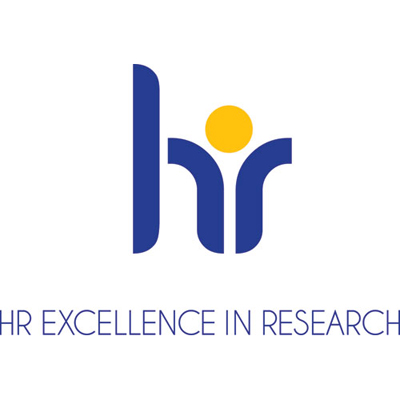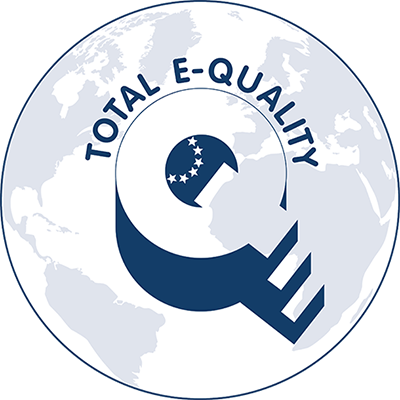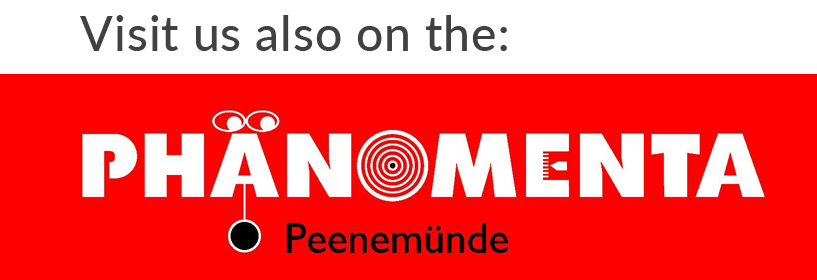Plasma Medicine
Plasma medicine is an innovative field of research at the interface between physics and life sciences, which has experienced an immense international upswing in recent years. So-called cold atmospheric pressure plasmas are generated with the help of special plasma devices in order to achieve medical effects directly on or in the patient. The current main field of application is the treatment of chronic, infected wounds and pathogen-related skin diseases.
Plasma can be used to inactivate many types of microorganisms including multi-resistant bacteria such as MRSA. In addition, scientific and clinical studies show that plasma supports natural wound healing by stimulating tissue regeneration. Recent research results also indicate a potential benefit in the inactivation of tumor cells during longer or more intensive plasma treatments. This gives hope for new perspectives in cancer treatment. The underlying cell and molecular biological mechanisms of the interactions between plasma and living cells or tissue and their influence by modifying plasma parameters are being investigated at the INP by interdisciplinary teams. In particular, the investigation of plasma-generated reactive molecules, such as reactive oxygen- and nitrogen species (ROS), [TvW1] plays a central role. Another major goal of this work is the progressive characterization and control of the physical properties of cold atmospheric-pressure plasmas in interaction with living systems in order to redesign and optimize plasma devices for medical applications, thereby opening up new fields of application and putting plasma medicine on a solid scientific basis. In the course of this extensive research work, it has been demonstrated that the application of cold atmospheric-pressure plasmas is safe - an essential condition for their use in medicine.
The first cold plasma devices have already received market approval. The atmospheric-pressure plasma jet kINPen® MED developed at INP (CE-certified as a Class IIa medical device by neoplas med GmbH Greifswald in 2013) is successfully used for wound healing and in dermatology.
The research work is currently focused on the following topics:
- Investigation of redox-based mechanisms of biological plasma effects, identification of synergies between plasma medicine and redox biology
- Preclinical and translational research and support of clinical applications of cold atmospheric pressure plasma, especially in the fields of wound healing, cancer treatment and immunology
- Design, construction, experimental testing and optimization of atmospheric pressure plasma sources for special biomedical applications
The Research Program Plasma Medicine cooperates with various local, regional, national and international research partners and clinics. In the field of development and characterization of cold atmospheric-pressure plasma sources for medical applications, the Research Program is a partner for industry.
With its Research Program Plasma Medicine, INP is a member of various research associations:
- Leibniz Health Technologies
https://www.leibniz-healthtech.de/en/ - Leibniz Research Network „Immune Mediated Deseases“
https://www.leibniz-gemeinschaft.de/en/research/leibniz-research-networks/immune-mediated-diseases.html - NZPM - Nationales Zentrum für Plasmamedizin e.V.
http://www.plasma-medizin.de/
Application fields
Medical applications of cold atmospheric pressure plasma sources include the disinfection of body surfaces and living tissue as well as the influence on wound healing. In the meantime, clinical studies have also shown that cold atmospheric pressure plasma, in addition to its antiseptic effect, directly stimulates the regeneration of injured tissue and can thus support the healing process of chronic wounds that do not heal well. The areas of application for such plasma devices are particularly in dermatology, plastic and aesthetic surgery as well as general and trauma surgery.
Since February 2022, the "curative treatment of chronic and infected wounds by application of physical cold plasma" is recommended in a guideline of the AWMF - Arbeitsgemeinschaft der Wissenschaftlichen Medizinischen Fachgesellschaften e.V..
Link to the guideline: https://www.awmf.org/uploads/tx_szleitlinien/007-107l_Rationaler-therapeutischer-Einsatz-von-kaltem-physikalischem-Plasma_2022-02.pdf
In connection with basic research on mechanisms of biological plasma effects, it was shown, among other things, that biological plasma effects mediate such effects in particular via changes in the liquid cell environment. It also became clear that plasma treatment of liquids can lead to them temporarily becoming biologically effective themselves. Research on these so-called "plasma-treated liquids" concerns their use as disinfectants and antiseptics as well as special application possibilities in oncology. This work is currently at the basic research stage.
Within the framework of basic research on plasma-cell interactions and in the translational tumor model, it was shown that cancer cells can also be killed with cold atmospheric-pressure plasma. An important goal of current research activities is to exploit this potential in the context of cancer treatment, e.g. in combination with surgical, pharmacological or immunomodulating therapeutic approaches. However, the current status of preclinical and clinical research does not yet allow the use of plasma in cancer therapy beyond special palliative applications.
The potential uses of cold atmospheric pressure plasma in dentistry include applications directly on the tooth, on implants and prostheses, and on the oral mucosa. Antibacterial and anti-inflammatory plasma effects are to be used in the treatment of periimplantitis, i.e. inflammation of dental implants, and in root canal treatment. Plasma application on intraoral skin and mucous membrane surfaces for wound healing or for the treatment of infections is also being considered. The possibilities known from surface technology for modifying and optimizing material surfaces can be applied to tooth surfaces as well as to metallic and plastic materials, for example by improving wettability to optimize bonding processes or to improve the adhesion of filling materials or to support the growth of bone cells on implant surfaces.
Project topics
The Center for Innovation Competence (ZIK) "plasmatis - plasma plus cell", which was launched in 2009, represents a unique combination of the expertise of biochemists, pharmacists, biologists and physicists within the new research field of plasma medicine. In recent years, the ZIK plasmatis has developed into an international leader in this field with a focus on research on the application of plasma for wound healing and in cancer therapy.
The two original junior research groups "Extracellular Effects" and "Cellular Effects" have now been consolidated as research groups "Plasma Source Concepts" and "Plasma Wound Healing" at INP. The two new junior research groups "Plasma-Liquid Effects" and "Plasma-Redox Effects" are investigating mechanisms of plasma-liquid interactions and the influence of cellular redox processes using cold plasmas within the framework of the ZIK plasmatis. Thanks to the support of the Federal Ministry of Education and Research (BMBF), the ZIK plasmatis has access to the most modern methods and state-of-the-art equipment to further deepen the interdisciplinary basic research in the field of plasma medicine at the Greifswald site and to transfer it to new clinical topics.
Scientific contact:
Dr. Sander Bekeschus
Phone: +49 (0)3834 - 554 3948
E-Mail: bekeschusinp-greifswaldde
Dr. Kristian Wende
Phone: +49(0) 3834 554 3923
E-Mail: kristian.wendeinp-greifswaldde
Link to Website: ZIK plasmatis
The Applied Plasma Medicine Center (APMC) is a joint project of the Leibniz Institute for Plasma Science and Technology (INP) and the Korean Plasma Bioscience Research Center (PBRC) of Kwangwoon University in Seoul.
The aim of this joint project is to improve international cooperation in basic and applied research in the field of plasma medicine and to develop new applications for cold atmospheric pressure plasma in wound healing and the treatment of human skin.
Based on the knowledge gained by the Korean scientists through the cooperation with INP scientists, the aim is to jointly develop plasma sources and concepts for future medical applications (e.g., in dentistry or for cosmetic/surgical applications). One of APMC's main goals is the adoption of the German DIN SPEC 91315 ("Basic requirements for plasma sources in medicine"), which includes the development of common standards for plasma sources and the establishment of routine analyses and uniform evaluation processes. Such standardization not only allows for a better comparability and reproducibility of plasma sources and study results, but also ensures the fast and safe development of cold plasma sources in the medical context and thus, above all, their safe application in humans.
Scientific contact:
Dr. Kai Masur
Phone: +49(0) 3834 554 3322
E-Mail: kai.masurinp-greifswaldde
Link to Website: http://apmc.or.kr/eng/apmc/index.jsp
The Clinic and Policlinic for Dermatology and Venerology of the University Medical Center Rostock is investigating innovative therapies against skin cancer together with the INP and other regional partners - with funding from the State Excellence Research Program of Mecklenburg- Western Pomerania.
With more than 200,000 cases in Germany, skin cancer is the most common type of tumor. One tenth of those affected are diagnosed with malignant melanoma, a black skin cancer that can metastasize in the body and lead to death within a few months. In order to improve treatment, an alliance under the leadership of the Department of Dermatology at Rostock University Hospital is researching new innovative forms of therapy. Cold plasmas, which are being researched at the INP, are used in combination with pharmaceutical agents that specifically intervene in the metabolism of tumor cells and prevent them from growing, and their effects are investigated. Further partners are the Universities of Rostock and Greifswald, the University Medicine Greifswald and the Alfried Krupp Wissenschaftskolleg Greifswald.
In Greifswald, promising results have already been achieved in the inactivation of tumor cells by plasma. The new project aims to optimize this process and to open up a further field of application. The cooperation with the University of Rostock offers the opportunity to test a potentially effective alternative in the fight against cancer, which complements established treatment methods such as chemotherapy.
Scientific contact:
Prof. Dr. med. Steffen Emmert
Direktor der Klinik und Poliklinik für Dermatologie und Venerologie
Universitätsmedizin Rostock
Phone: +49 (0)381 494-9700
E-Mail: steffen.emmertmed.uni-rostockde
Dr. Sander Bekeschus
Head of research group "Plasma redox effects"
Zentrum für Innovationskompetenz (ZIK) plasmatis
Leibniz-Institut for Plasma Science and Technology (INP)
Phone: +49 (0)3834 554-3948
E-Mail: sander.bekeschusinp-greifswaldde
Link to Website: https://www.onkother-h.med.uni-rostock.de/
Das Ziel dieses Projektes ist die Initiierung eines Normungsprozesses zur Testung der Wirksamkeit und Sicherheit von kalten Atmosphärendruckplasmaquellen für medizinische Anwendungen basierend auf einheitlichen und anwendungsrelevanten Testverfahren. Basis und Ausgangspunkt ist die im Jahr 2014 unter der Federführung des INP veröffentlichte DIN SPEC 91315 „Allgemeine Anforderungen an medizinische Plasmaquellen“, die optimiert, angepasst, erweitert und in eine reguläre Norm überführt werden soll. Es sollen standardisierte Messverfahren für sämtliche plasmamedizinischen Quellenkonzepte (z.B. Volumen-, Oberflächen, oder Jet-Entladung) inkl. ihrer spezifischen Eigenschaften (u.a. Ein- bzw. Multi-Elektrodenkonzepte, kontrollierter Arbeitsgasvolumenstrom bzw. Umgebungsluft) vorgeschlagen werden. Die betrifft Testverfahren, die sowohl physikalisch-technische Kriterien für Plasmaquellen für den medizinischen Einsatz untersuchen als auch die biologischen Plasmawirkungen dazu in Bezug setzen.
Scientific contact:
Dr. Sybille Hasse
Tel.: +49(0) 3834 554-3921
E-Mail: ybille.hassemed.uni-rostockde
Publications
| Year: |



































